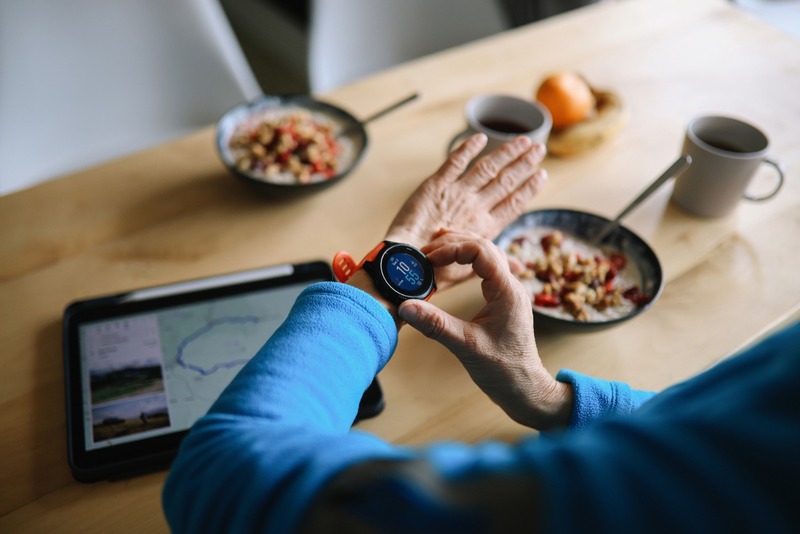News
Keeping it Real: VVMC's New Mobile Simulation Lab
Vail Valley Medical Center President and CEO Doris Kirchner was on a tour of the esteemed Johns Hopkins University in Baltimore when she walked by a room that caught her eye. Inside health care professionals were circled around a human simulator typically referred to as a manikin executing a scene that could be occurring in any hospital anywhere in the world. In a matter of seconds Kirchner was captivated. She told the others in her group to keep going and watched her first simulation session with fascination. Here were medical professionals practicing skills using computer-programmed scenarios on high-fidelity manikins that had every appearance of life but were never in threat of dying. Assess intervene anticipate communicate and repeat. That she thought is what we need at Vail Valley Medical Center.
And so began the effort to implement a simulation education program at VVMC. It started with a vision that has become a reality in the form of a 40-foot bus and a family of manikins the Jetsims: George and Jane and their children Elroy Ollie and Judy.
For VVMC simulation training will close a gap so often experienced by health care institutions located outside of a metropolitan area: the ability to prepare for low-volume high-risk medical occurrences and to develop and refine skills that may save a life.
Prior to the implementation of VVMC's mobile simulation learning program participation in clinical educational events typically required a trip to Denver or beyond. Over the past decade simulation training has rapidly gained ground as a preferred tool for health care professionals to acquire and hone skill sets that may not get much use in day-to-day operations or are emerging best practices. In this world everyone is an outlier capable of achieving 10000 hours of practice. And as we all know practice makes perfect.
Historically health care education in the hospital has been based on situations you happened to encounter in your training or orientation says Mary Hinz VVMC's Clinical Simulation Educator. Through simulation we can conduct identical and repeatable learning events ensuring that health care providers within all of our facilities practice the same high level of expertise.
Added Alice Weydt VP of Patient Care: The ability to perfect our skills in a learning environment builds our confidence to care for patients that we see routinely or only occasionally.
The manikins are startlingly lifelike one reason they've been given names. Their chests rise and fall as they breathe. They blink cry and talk all via the technicians at the computer controls. VVMC's two simulation technicians develop scenarios that are designed to elicit responses from the manikin based on interventions conducted by the staff. Simulation technicians sit out of sight and manipulate the sequence of actions and reactions for the practicing team via video feed. The manikin's skin is capable of absorbing various injections or cuts and blood and other bodily fluids are produced accordingly. One could almost expect the patient to sit up and reach for the TV remote.
As important as it is to know the sequence of events to treat and stabilize a patient when a medical situation presents itself it's equally important to hone communication skills between team members. Past research by The Joint Commission (the independent entity that accredits and certifies hospitals across the United States) has indicated that a majority of medical mistakes are caused by errors in communication and teamwork says Hinz. Team-based simulation supports perfecting clinical skills and critical thinking while we integrate both behavioral and communication competencies into every scenario.
In a typical VVMC simulation scenario a team of six to eight medical professionals is gathered around a stretcher inside the mobile training center. There may be some live acting in the form of a distraught loved one who will give an initial set of circumstances or sequence of events that led to the patient's current condition. That same person typically part of the team that conducts the sessions will also respond to questions but will keep to an undisclosed script. The medical team's assessment and treatment of the patient are video recorded for playback in a debriefing session what went well what could be improved what was learned.
With the capacity to create specific scenarios we can adapt education to specific learning needs says Hinz. For example all caregivers will experience learning events focusing on the care of a pregnant woman however the needs of the ICU staff will differ from our obstetric caregivers. This scenario design concept continues our focus on a safe learning environment as we alter the complexity of care to match the learner's level of expertise.
By having a mobile training center VVMC can bring simulation to its five campuses along a 36-mile stretch of I-70 as well as to other groups such as ski patrol paramedics and rescue organizations. This way anyone involved in the continuum of care can achieve a level of training that will enhance patient outcomes. In time the program will be shared with other health care institutions outside of Eagle County on Colorado's Western Slope.
We now have an enormous opportunity to elevate the level of care and collaboration among groups that share the same goal: providing the best possible care to anyone in need no matter where that care occurs says Hinz.
For Kirchner the reality of an idea borne out of a happenstance moment is a milestone for Vail Valley Medical Center. We are a unique health care institution says Kirchner. I like to say we're a big little hospital. For a 58-bed facility we are expected to provide a vast array of services. And we want to be able to give our patients exemplary care which means we need to be prepared to handle virtually anything on a moment's notice.
More News
-
New!
More

First Chair to Last Call: What Does Alcohol Really Mean For Your Health?
In nearly every Colorado ski town, some iteration of the neon sign blares its play-hard-party-harder anthem. It’s a not-so-subtle nod to mountain party culture, a lifestyle that normalizes combining sports and outdoor adventures with heavy drinking and partying. In Eagle County, après culture, high-altitude living and outdoor performance have coexisted for as long as locals have been sliding on snow. But how much is too much at altitude? And what role do social support systems play in helping residents find balance?
-
New!
More

Counting More Than Steps: How Wearables Can Help (or Hinder) Your Health
From step counts to sleep stages, heart rate variability to blood sugar spikes, wearable devices are giving us a front-row seat to what’s happening inside our bodies. Strapped to wrists, slipped onto fingers or wrapped around our biceps, wearables like the Oura Ring or Whoop strap promise insight and advice in the quest for better health.
-
More

Cass Barham and Sarah Crabtree Honored As Recipients of Vail Health Elevate Award
Cass Barham and Sarah Crabtree, both lab techs at Vail Health Hospital, have been named recipients of the Vail Health Elevate Award. Vail Health created the Elevate Award in June 2022 to give patients and their families an opportunity to nominate and thank employees who have touched their lives in some way.
